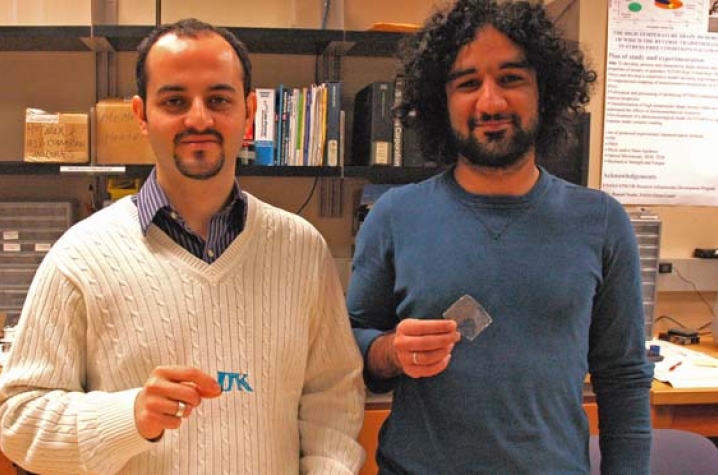Researcher Explores Shape-recovering Polymers

LEXINGTON, Ky. (March 25, 2010) −In his University of Kentucky laboratory, Haluk Karaca is testing polymers that can be twisted or crumpled and fully recover their original shape.
Karaca, an assistant professor of mechanical engineering in the UK College of Engineering, has developed the shape memory polymers that are molded into a shape, then under heat stretch out, then regain their original shape as they cool.
"Polymers are very easy to shape, any shape you want. They're driven by temperature, water solution and magnetic field, so they're promising for biomedical applications," Karaca said.
Shape-memory alloys, usually nickel-titanium based, were developed for aerospace applications like jet engines, in which they can reduce both noise and fuel consumption by morphing the air inlet or outlet of jet engines into different shapes during takeoff and steady flight at high altitudes, said Karaca, who is also exploring the properties of these alloys.
Researchers are also investigating the use of super-elastic shape-memory alloys that have the potential to be used in a variety of ways: medically, to capture kidney stones and open arteries to provide free blood flow and structurally, to provide earthquake stability in buildings and bridges.
But some of these uses may be out of bounds for the alloys, because metals may not be fully biocompatible.
"Additionally, metals aren't as pliable as polymers, so that offers an advantage for using polymers in specific situations," Karaca said.
"The polymers we're looking at have potential uses for removing blood clots from blood vessels as well as other purposes. They have an added advantage in that they can be biodegradable, so after doing their job in a person's body, they disappear," Karaca said.




